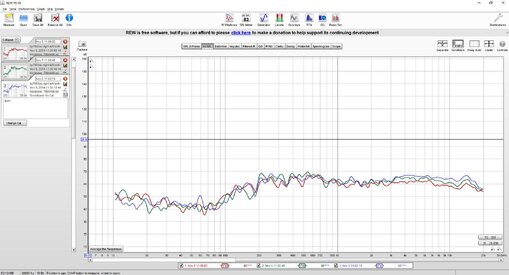truwarrior22
Registered
Thread Starter
- Joined
- Mar 22, 2021
- Posts
- 3
Each speaker, i.e. the first two measurements, the response looks good, but when I measure both speakers at the same time, the tweeter frequency looks horrible. Any suggestions? 2nd measurement of both speakers (purple) was a foot further back. Speakers are Sonus Faber Toy towers hooked up to Marantz in pure direct mode.
















